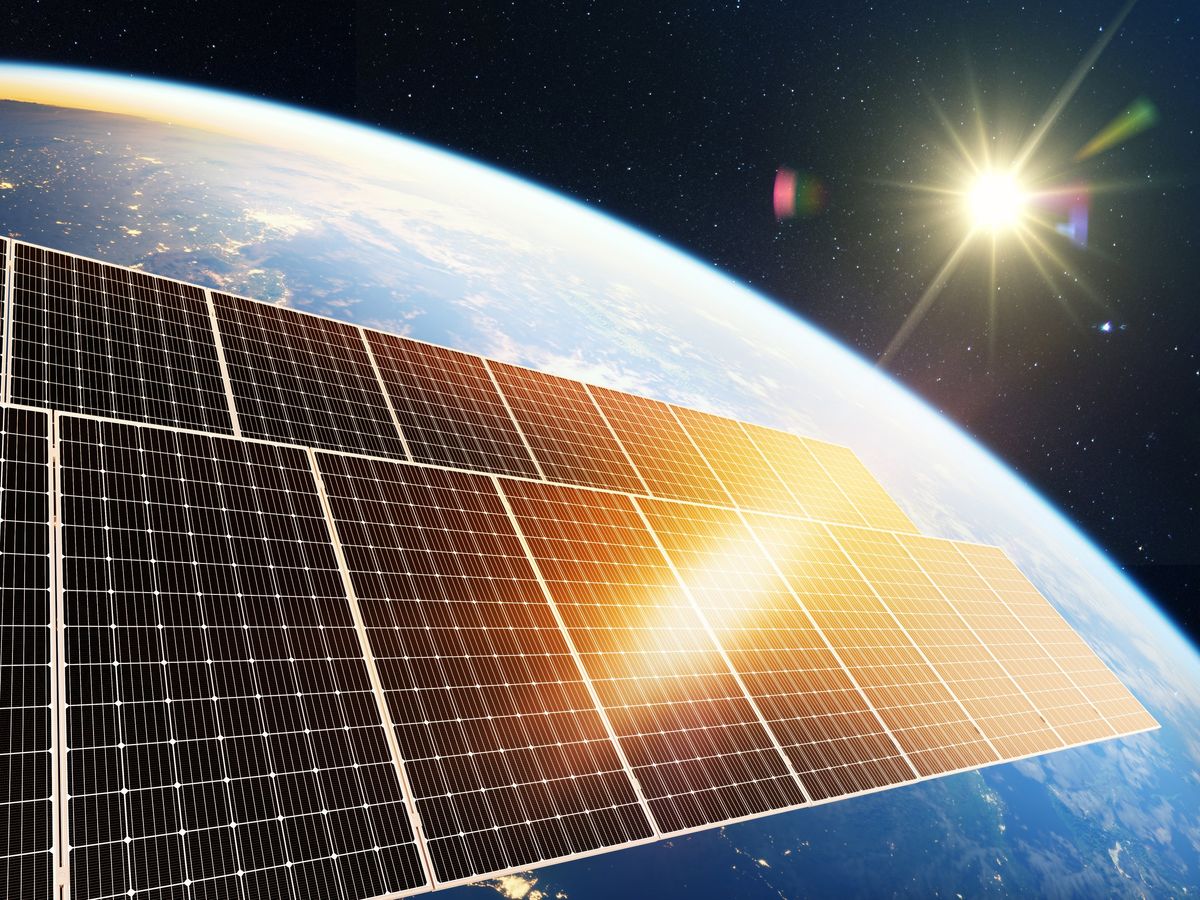Despite the advancements of recent years, solar cells still leave a little bit to be desired in situations where weight must be minimized. 2D semiconductor materials have been considered as a possible solution, but they’ve historically been hampered by inefficiency.
Now, solar cells made with 2D semiconductor materials could reach double the efficiency of previous such devices by optimizing the materials and design, researchers show. Their proposed design gives today’s thin-film solar cells a run for their money, boasting some of the highest power per weight of any thin-film technology available today, at almost 200 watts per gram.
The ultralight, flexible solar cells could find use in space-based solar arrays, spacecraft, satellites, drones, wearables electronics, and “powering anything where weight is an issue,” says Deep Jariwala, an electrical and systems engineer at the University of Pennsylvania.
Jariwala and colleagues are researching solar cells made of the 2D semiconductors called transition metal dichalcogenides (TMDs), which include materials such as tungsten selenide and molybdenum disulfide. Researchers have investigated TMDs for over a decade as components for thin-film electronics and sensors. And in the past five years, there has been an increasing interest in their photovoltaic properties. While the first few TMD solar cells had efficiencies under 1 percent, Jariwala’s team reported devices with over 5 percent efficiency last year.
Exciting Excitons
But despite practical advances, no one has accurately calculated the ultimate theoretical efficiency limits for TMD solar cells so far. People who were making theoretical projections of efficiency limit were not accounting for an important parameter: excitons, which are bound pairs of electrons and holes, which are positively charged spots in an atomic structure where an electron could exist.
Bulk photovoltaic materials like silicon absorb light to create electrons and holes that flow freely and generate electricity. But in any nanoscale or low-dimensional material, Jariwala explains, the created charges stay bound together as excitons, “which start dominating the properties of those semiconductors. If you don’t account for excitons you don’t know the true theoretical limit.”
To make a practical solar cell with the 2D materials, the key is to come up with a design that traps light and maximizes absorption. Otherwise, most of the light would pass through. So the researchers made a special light-trapping lattice structure that looks like a layer cake. The structure alternates repeating layers of molybdenum disulfide and aluminum oxide placed on top of a light-reflecting gold layer. This structure absorbs more than 90 percent of the light that enters it.
By optimizing the material thicknesses and other device parameters, and taking into account exciton physics, the researchers calculate a maximum efficiency of almost 13 percent.
That’s small compared to the 25 percent efficiency of state-of-the-art silicon solar cells. But those are micrometers or even millimeters thick. “The 2D semiconductor in this solar cell is 4 nanometers in thickness,” Jariwala says. “So there’s a giant difference in thickness and therefore overall weight. These could really give you record performance in terms of specific power. That’s the key advantage. For lightweight or remote power applications this is a great material.”
Power and Permanence in One Package
Given its theoretical efficiency and nanometer-scale thickness, the researchers calculated a specific power of nearly 200 W/g for their proposed devices. That’s as much as ten times the specific power of commercial cadmium telluride cells, they show in a 6 June article in the journal Device.
Organic solar cells, another promising thin-film technology, have high specific power of 150 W/g. But compared to the organic polymers used in those devices, TDM materials are more stable and will not degrade over time, Jariwala says. “So they’re the best of both worlds. They have the optical properties of organic solar cells but the chemical and physical properties of inorganic solar cells.”
The next step for the researchers is to make an actual solar cell. They will have to figure out the best materials for the electrodes and contacts, how to put those down on the 2D lattice structure, and then collect the charges efficiently. Then, scaling the solar cells to larger sizes should be relatively straightforward, Jariwala says.
“We know how to trap the light and get it absorbed in extremely thin structures over large areas,” Jariwala says. “What’s left now it’s an electronic engineering problem. Hopefully, in the next year or so we should be able to have some experimental demonstration of such solar cells. These are thin-film materials. They would undergo the same kind of nanofabrication that you would use for silicon or gallium arsenide or any other inorganic semiconductor material. Chemistry-wise they’re very similar to cadmium telluride which is already commercial. I don’t see any reason that you cannot commercialize these.”
- Paper-Thin Solar Makes Any Surface Photovoltaic ›
- Record Power Boost for New Flexible Solar Tech ›
- Solar-powered electric motors for EVs that never plug in - IEEE Spectrum ›
Prachi Patel is a freelance journalist based in Pittsburgh. She writes about energy, biotechnology, materials science, nanotechnology, and computing.



